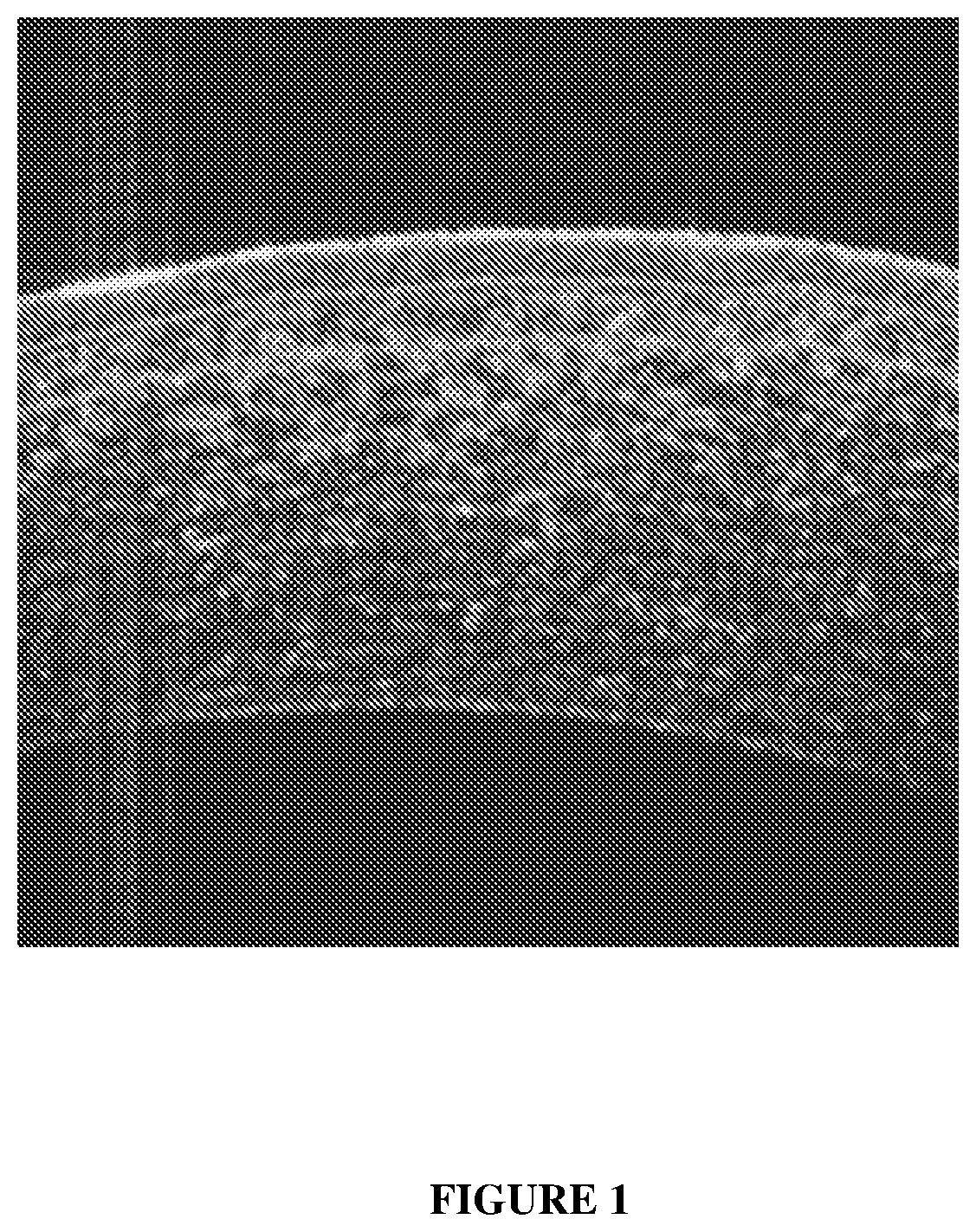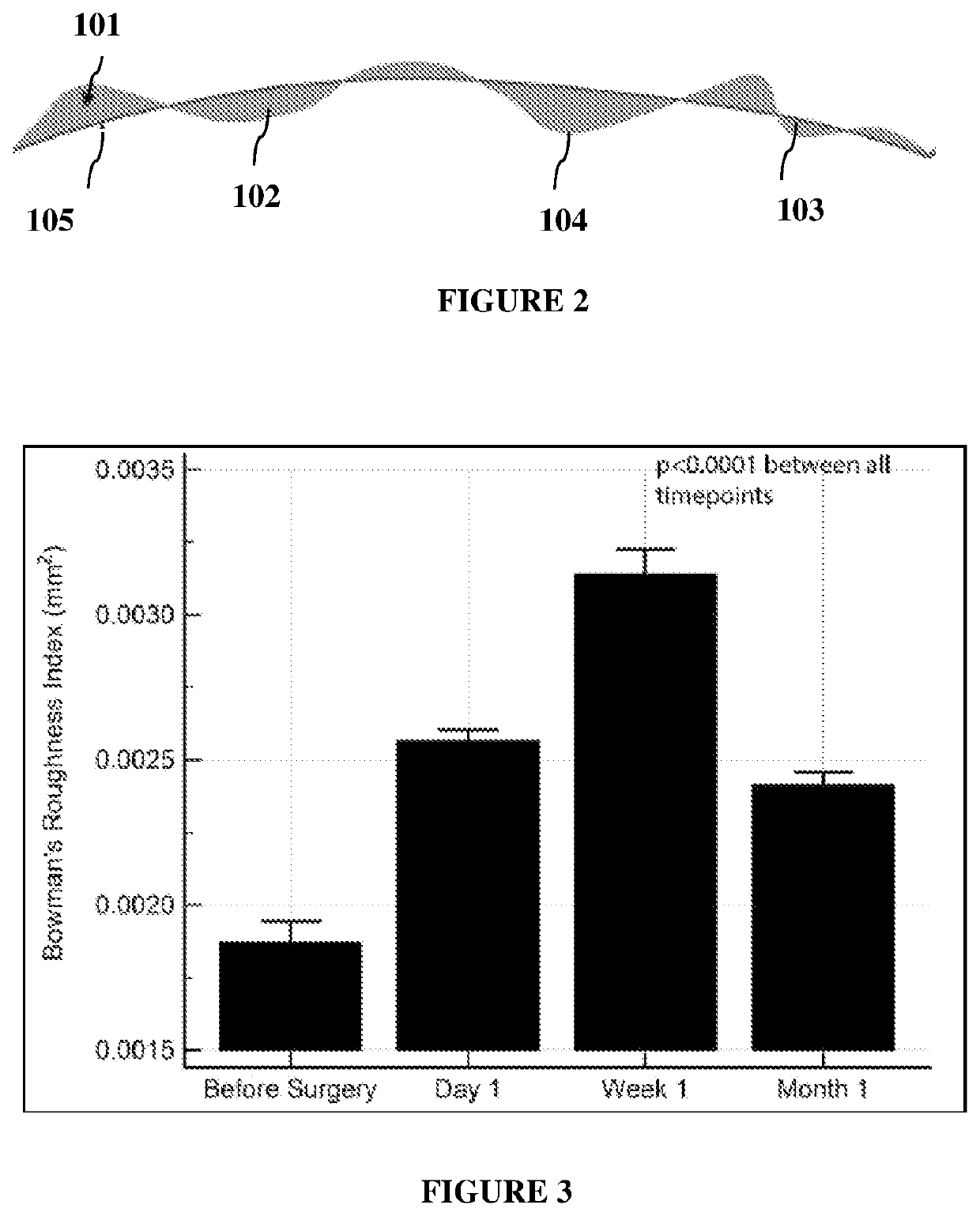Index for quanitification of bowman's layer roughness for diagnosis of disease and prognosis of treatments in human cornea
a technology of quanitification and bowman's layer, which is applied in the field of index for quanitification of bowman's layer roughness for diagnosis of disease and prognosis of treatments in human cornea, can solve the problems of unintended microdistortions in bowman's layer after smile, biomechanical instability, and lamellar keratitis, and achieve the effect of prognosis and treatmen
- Summary
- Abstract
- Description
- Claims
- Application Information
AI Technical Summary
Problems solved by technology
Method used
Image
Examples
example 1
[0045]The study includes the analysis of eyes of patients between 18 to 50 years of age undergoing SMILE with a stable moderate to high myopia for a minimum period of one year, a corrected distance visual acuity of 20 / 25 or better, a spherical equivalent refraction less than −10D and a refractive astigmatism less than −3D. The Bowman's layer in the central 3 mm cornea is imaged with high resolution optical coherence tomography (Envisu, Bioptigen Inc., Morrisville, USA). The optical coherence tomography exhibited a resolution of 2.4 μm in tissue, which allowed Bowman's layer image with sufficient number of pixels. The optical coherence tomography imaging is performed not only at 1 month but also at day 1 and week 1 after surgery to evaluate the longitudinal variation of the microdistortions.
[0046]The location of the 2-Dimensional (D) scan is set at each follow-up such that it subdivided the projection image of the cornea into nearly two equal halves. Further, at least three 2-D scans...
PUM
 Login to View More
Login to View More Abstract
Description
Claims
Application Information
 Login to View More
Login to View More - R&D
- Intellectual Property
- Life Sciences
- Materials
- Tech Scout
- Unparalleled Data Quality
- Higher Quality Content
- 60% Fewer Hallucinations
Browse by: Latest US Patents, China's latest patents, Technical Efficacy Thesaurus, Application Domain, Technology Topic, Popular Technical Reports.
© 2025 PatSnap. All rights reserved.Legal|Privacy policy|Modern Slavery Act Transparency Statement|Sitemap|About US| Contact US: help@patsnap.com


